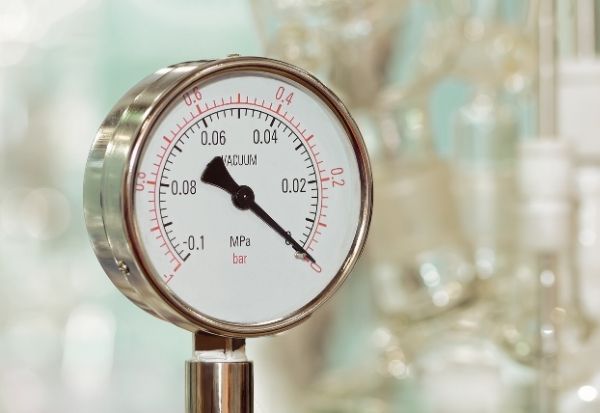What is Vacuum and How Is It Measured?

For someone new to the idea, vacuum can seem a little complicated, but the truth is that it’s not all that difficult to understand. Vacuum is used in many more places than one might first believe, including fields such as food processing, material handling, and industrial and laboratory applications. So, what is vacuum exactly? In this article, we’ll tell you exactly what vacuum is and how it is measured so you can get a better idea about what it is we do and why we do it.
What Is Vacuum?
Vacuum is defined as any air pressure measured to be less than the Earth’s normal atmospheric pressure. Earth’s atmospheric pressure is roughly 14.7 psi or pounds per square inch. When vacuum is brought up, the idea of space is usually floated around as well. While space is definitely a vacuum, it is still not a perfect vacuum.
A perfect vacuum can be thought of as a space where all matter has been removed. This is impossible to recreate on Earth as we currently understand it. The closer to a perfect vacuum you try to get, the more difficult and more expensive it becomes to produce.
There are some factors that can affect how consistent or useful relative vacuum measurements actually are. These include phenomena such as different weather conditions or varied altitudes, as both of these things affect how much atmospheric pressure the Earth exerts.
How Is Vacuum Measured?
Vacuum levels are determined by how many molecules are in a given chamber. There a plenty of different vacuum measurement units; some of the most common are:
- in.-Hg – this measurement refers to the height of a column of mercury in inches This is good for rough vacuum measurement. This is a differential measurement from atmosphere, and usually expressed as a negative.
- mm.-Hg – this refers to the height of a column of mercury in millimeters, also the = Torr. When expressed with a negative, it is differential pressure from atmosphere. When expressed in a positive number, it is an absolute measure.
- Torr – defined as 1/760 of an atmosphere or 1 mm.-Hg This is the same measurement as mm Hg when expressed as a positive number.
- Atmospheres – one standard atmosphere of pressure is equal to 14.7 psi (pounds per square inch)
While there are other measurements that can be used to measure vacuum, these are some of the more common examples.
Our team at DigiVac wants to answer the question, “What is vacuum and how is it measured?” for you, so you have a better understanding of what we do. If you’ve been searching for a vacuum gauge manufacturer, look no further. We have the precision vacuum tools you can rely on that deliver practical vacuum measurement and the accuracy you need.
